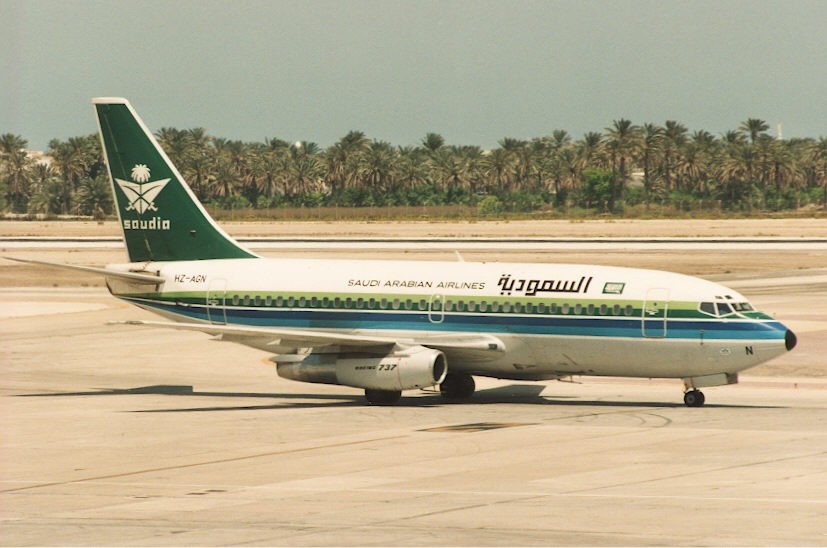STORY NUMBER
wrong size screws were used on the windshield replacement of the Boeing 737
AIRCRAFT MAINTENANCE requires a cool head and when somebody working on any job he should be honest with to job and the company he is working for some time the person working with a group then all of should be sincere in the job normally it’s like this but sometimes the person working together are of not harmonic in the work and that causes the problemWe were assingh to change the windshield of Boeing 737 my companion was mr tim and we start arranging the work setup it requires aircraft to be in hanger and special stands so we started the job you might have notice a normal phenomenon when any thing required to remove or dismantle the crew singh will try as fast as it can be so lot of time when times come up to install back the people start looking for the panels or hardware etc etc my procedure of work wa that whatever ie remove from the location it should be number organize and kept properly in general so when we start removing the windshield mr tim was in little hurry as usual giving lot of unwanted unrelated talks well it’s ok as some people enjoy by listening but we should concentrate on job as priority so when we were removing the screws and i was collecting them in a bag mr tim dropped few of them on flour telling me its ok they were bad and we had to change them any how i wa keeping quiet finally the windshield was removed and we start installing the new windshield after avionics tested the heating element of anti ice and we started putting the new one at its place you know the bolts are tighten in a special order so we were doing well now at the end we were running short of those special screw which were fallen in ground bad luck was this we were having short of four special screw now mr tim was worried as i told him those screws are out of stock and we don’t have those special length screws anywhere another thing come on the head was the hangar shift manager who was pushing us to finish the job tim got a little nervous but he told manager there are three bolts or special screw are shorin number removed the manager got his hightone and start cursing i have given the mat time and you guys are holding the aircraft just for these two screws and tim told him sir we dont have the proper length pstr number screws he said god dammit one or two screws will not make any difference …. See the funny words some time when ever think of these word the face of manage comes in front so mr tim told me hay abbas i am going to sign it we will install other bolts so the job was completed aircraft was released to service and it was the first flight to MEDINA pilot made an semi emergency landing there the reason was sooner aircraft took off and reached to the required altitude a sharp whistle sound start coming from the windshield the pilot contact control tower he was given priority and special altitude till he landed safely the investigation stated as the aircraft was grounded there it was the longer screw was used and windshield was not properly seated e wel what happened after this findings it’s another story and that you have to imagine what conversation was between the two mr tim and the shift manager and i was out as the paperwork was indicating the signatures and all the only words i will say never take any aircraft maintenance job as lightly a big responsibility comes on the shoulder of personnel involved
CAN BE VIEWED ON THE LINK BELOW
 https://youtu.be/P9JqSlJ-az0
https://youtu.be/P9JqSlJ-az0
STORY NUMBER
WHEN ANOTHER AIRCRAFT PARKED ON BEAVER DH C 2 AND I WAS WORKING ON ENGINE ROTATING PROPELLER
If you come across a similar event, it often reminds you of a previous one. People don’t truly grasp the essence of an incident until it happens to them. The idea behind sharing my technical life experiences—both incidents and accidents—is to ensure they do not happen to someone else. We human beings depend on each other in many ways, and improvement comes only when we share our knowledge with those around us. Some people turn a simple event into a fascinating and exaggerated story, while others downplay even a major incident. Perspectives vary from person to person.
Today’s story is an old one—almost 45 years back—when I was a fresh arrival in the aviation field. As I have mentioned before, my aviation career started as an aviation helper. Although I had completed my college education, there was no other way to enter the aviation industry except by starting from scratch. You can imagine, or may have experienced, that when you are the most junior person in a field, some seniors will appreciate you, but most will treat you with indifference or even hostility. I wouldn’t call it dislike, but it’s something close to that, and it happens for various reasons—this is the human factor at play.
As a newcomer in the field, I was both welcomed and challenged. Many strange and difficult jobs were assigned to me, often without proper guidance. For example, during a D-check inspection, aircraft paint is stripped off for a thorough skin inspection. A paint remover is applied to remove the old coating. Being new, I was not warned about handling the paint remover carefully. I observed others and was given a brush and a container of paint remover to apply to the aircraft’s belly. Eager and enthusiastic, I applied it generously, but some splashed onto my hands and face—even though I was wearing gloves. That was just one of many instances where I learned things the hard way.
Over time, I became known for my hard work and willingness to take on any task without hesitation. Some good-hearted individuals guided me through difficult situations—may God bless their souls—while others, unfortunately, intentionally put me in challenging situations, hoping I would quit. It is painful to recall those moments, but the lesson I want to share is this: While focusing on your job is important, always stay aware of your surroundings. Over-involvement in work and losing track of everything else can sometimes lead to trouble.
There was a senior mechanic, Mr. Anwar—may Allah bless him—who was very kind and highly professional. He was a master of aircraft engines. Due to his strong physique, he could even torque high-tension propeller bolts by hand. Since I was 20 years old and slightly overweight, he often took me as his assistant for heavy tasks. This helped me complete the required experience paperwork to appear for my Aircraft Maintenance Engineer (AME) examination. I gained significant experience working on aircraft engines, but some people still did not accept me as a future engineer and remained uncooperative. But that is in the past—may Allah forgive me and them too.
One particular day, we were assigned to complete the final engine work and install the propeller. Let me explain: Installing a propeller is a physically demanding job, especially the one I am referring to—a Hamilton Standard propeller installed on a DHC-2 Beaver aircraft with a Pratt & Whitney Wasp Junior nine-cylinder engine. Even installing the engine itself was a difficult task. However, we successfully installed both the engine and the propeller.
I was fully engaged in the work, both physically and mentally (a habit I still have). I was also quite happy with the progress. While performing the installation, we had to hand-crank the engine as well. I did that too. (For those unfamiliar, the spark plugs are removed to facilitate manual cranking of the engine.) After a 10-minute break, I had to rotate the propeller again. Using my full strength, I turned it forcefully—only to hear a loud bang!
The propeller had struck the wingtip of another aircraft! The other crew had unknowingly parked an aircraft within the rotation radius of the propeller, failing to realize that work was in progress. Everyone quickly gathered around, including the chief engineer, Mr. Osman Baig. The wingtip of the parked aircraft was damaged. He was furious and shouted at everyone, demanding to know who had moved the aircraft into that position. He also didn’t have any kind words for me. I remember him saying that I was lucky the aircraft didn’t have a wingtip fuel tank, which was common on most aircraft. Fortunately, only the wingtip light was damaged. He ordered the sheet metal team to remove and repair the tip.
The story didn’t end there. The senior engineer responsible for parking and mooring that aircraft admitted his mistake, as he had positioned it himself. Because of this, I wasn’t reprimanded further. However, I still felt guilty. Why hadn’t I noticed the aircraft parked so close? The reason was simple: I was deeply involved in my work and had treated the task as routine. Since morning, we had been working tirelessly to complete the job within record time—and that’s how the incident happened.
In the end, the other aircraft was grounded for repairs, the wingtip was replaced, and thankfully, there was no significant damage to the propeller I had been working on.
I hope students, readers, or listeners will take a lesson from this. Stay focused on your work, but always remain aware of your surroundings. If you have any related questions, I welcome all inquiries for further awareness.
CAN LISTEN ONhttps://youtu.be/kkt6hhTXGeQ


